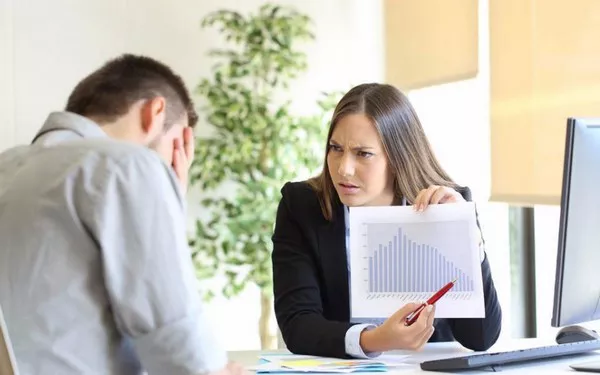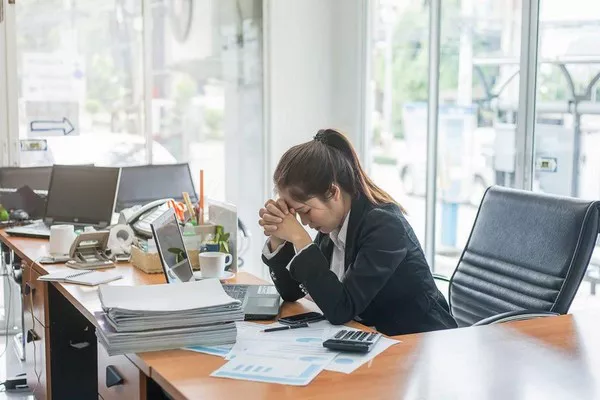Anxiety attacks, often referred to as panic attacks, can be overwhelming and frightening experiences. They can occur suddenly and without warning, leading to intense feelings of fear, discomfort, and a range of physical symptoms. Understanding how to calm yourself during an anxiety attack is crucial for managing these episodes effectively. This article will explore what anxiety attacks are, their symptoms, causes, and most importantly, practical strategies to help you calm down and regain control.
Understanding Anxiety Attacks
What is an Anxiety Attack?
An anxiety attack is a sudden episode of intense fear or discomfort that reaches a peak within minutes. During an attack, you may feel a sense of impending doom or a fear of losing control. These attacks can happen in various situations and can vary in frequency and intensity.
Symptoms of Anxiety Attacks
The symptoms of an anxiety attack can be both physical and emotional. Common symptoms include:
Rapid Heartbeat: You may feel your heart racing or pounding in your chest.
Shortness of Breath: You might feel like you can’t catch your breath or are choking.
Sweating: Excessive sweating, especially on your palms or forehead, is common.
Trembling or Shaking: You may experience shaking or trembling in your hands or legs.
Nausea or Stomach Distress: Some people feel a tightness in their stomach or experience nausea.
Dizziness or Lightheadedness: You might feel faint or dizzy.
Chills or Hot Flashes: Sudden feelings of heat or cold can occur.
Feelings of Detachment: You may feel disconnected from reality or as if you are losing control.
Recognizing these symptoms can help you identify when you are experiencing an anxiety attack.
Causes of Anxiety Attacks
Anxiety attacks can be triggered by various factors, including:
Stressful Life Events: Major life changes, such as moving, starting a new job, or experiencing a loss, can trigger anxiety attacks.
Chronic Stress: Ongoing stress from work, relationships, or financial issues can build up and lead to an attack.
Medical Conditions: Certain medical conditions, such as thyroid problems or heart issues, can contribute to anxiety.
Substance Use: Caffeine, alcohol, and recreational drugs can increase anxiety levels and trigger attacks.
Phobias: Specific phobias or fears can lead to panic attacks in certain situations.
Understanding the causes of your anxiety attacks can help you manage them more effectively.
Strategies to Calm Yourself During an Anxiety Attack
When you feel an anxiety attack coming on, it’s essential to have strategies in place to help you calm down. Here are several effective techniques:
1. Deep Breathing
Deep breathing is one of the most effective ways to calm your body and mind during an anxiety attack. Here’s how to practice it:
Find a Comfortable Position: Sit or lie down in a comfortable position. Close your eyes if it helps you focus.
Inhale Deeply: Breathe in slowly through your nose for a count of four. Focus on filling your lungs completely.
Hold Your Breath: Hold your breath for a count of four. This helps to increase the oxygen in your body.
Exhale Slowly: Breathe out through your mouth for a count of six. Imagine releasing all the tension and fear with your breath.
Repeat: Continue this deep breathing pattern for several minutes. Focus on your breath and allow your body to relax.
2. Grounding Techniques
Grounding techniques can help you stay present and reduce feelings of panic. Here are some effective grounding exercises:
5-4-3-2-1 Technique: This technique helps you focus on your surroundings. Identify:
- 5 things you can see
- 4 things you can touch
- 3 things you can hear
- 2 things you can smell
- 1 thing you can taste
Focus on Your Feet: Stand or sit and concentrate on the feeling of your feet touching the ground. Imagine the earth supporting you.
Hold a Fidget Object: Carry a small object, like a stress ball or a smooth stone, to hold when you feel anxious. Focus on its texture and weight.
3. Positive Affirmations
Using positive affirmations can help counter negative thoughts during an anxiety attack. Here’s how to use them:
Identify Negative Thoughts: Pay attention to the thoughts that arise during an attack. Recognize them as irrational fears.
Create Positive Affirmations: Replace negative thoughts with positive statements. For example, change “I can’t handle this” to “I am safe, and this will pass.”
Repeat Your Affirmations: Say your affirmations out loud or write them down. Repeat them to yourself during the attack.
4. Visualization Techniques
Visualization can help calm your mind and body. Here’s how to practice it:
Close Your Eyes: Find a comfortable position and close your eyes.
Imagine a Peaceful Place: Picture a place where you feel safe and relaxed, such as a beach or a quiet forest.
Engage Your Senses: Imagine the sights, sounds, and smells of this place. Allow yourself to immerse in this visualization.
Stay in the Moment: Spend a few minutes in this peaceful place, focusing on the feelings of safety and calmness.
5. Progressive Muscle Relaxation
Progressive muscle relaxation (PMR) involves tensing and then relaxing different muscle groups. This technique can help reduce physical tension associated with anxiety. Here’s how to do it:
Find a Quiet Space: Sit or lie down in a comfortable position.
Start with Your Toes: Tense the muscles in your toes for a count of five, then relax them.
Move Up Your Body: Gradually tense and relax each muscle group, moving from your feet to your head (feet, legs, abdomen, arms, shoulders, and face).
Focus on the Difference: Pay attention to the contrast between tension and relaxation in each muscle group.
6. Engage in Physical Activity
Physical activity can help release built-up energy and improve your mood. Here are some ways to incorporate movement into your routine:
Go for a Walk: A simple walk outside can help clear your mind and reduce feelings of anxiety. Pay attention to your surroundings and breathe deeply.
Practice Yoga: Yoga combines movement with breath control. It can help calm your mind and body. Look for beginner classes or online tutorials.
Dance: Put on your favorite music and dance around your room. This can help you release excess energy in a fun way.
7. Use Aromatherapy
Aromatherapy can have a calming effect on the mind and body. Here’s how to use it:
Choose Calming Scents: Essential oils like lavender, chamomile, and bergamot are known for their calming properties.
Use a Diffuser: Add a few drops of essential oil to a diffuser and let the scent fill the room.
Inhale Directly: If you don’t have a diffuser, you can inhale the scent directly from the bottle or apply a diluted oil to your wrists.
8. Limit Stimulants
Stimulants can increase feelings of anxiety and exacerbate anxiety attacks. Here are some tips:
Reduce Caffeine Consumption: Limit your intake of coffee, tea, and energy drinks. Opt for herbal teas or water instead.
Avoid Sugar: High sugar intake can lead to energy crashes and increased anxiety. Choose healthy snacks like fruits and nuts.
9. Create a Calming Environment
Your environment can significantly impact your mood and anxiety levels. Here’s how to create a calming space:
Declutter Your Space: A tidy environment can promote a sense of calm. Take time to declutter your living or work space.
Add Comforting Elements: Incorporate items that bring you comfort, such as soft blankets, candles, or plants.
Limit Noise and Distractions: Reduce noise and distractions in your environment. Consider using noise-canceling headphones or playing calming music.
10. Connect with Others
Social support can help you manage anxiety and prevent it from becoming overwhelming. Here are ways to reach out:
Talk to a Trusted Friend: Share your feelings with someone you trust. Talking about your emotions can provide relief and support.
Join a Support Group: Consider joining a support group for individuals experiencing similar challenges. Sharing your experiences can help you feel less alone.
Limit Isolation: Make an effort to engage with others, even when you don’t feel like it. Attend social gatherings or reach out to friends, even if it’s just a text or call.
11. Practice Mindfulness
Mindfulness is the practice of staying present and fully engaging in the moment. It can help reduce stress and anxiety. Here are some ways to practice mindfulness:
Mindful Breathing: Focus on your breath and observe each inhale and exhale. Allow thoughts to come and go without judgment.
Mindful Eating: Pay attention to the taste, texture, and aroma of your food. Eating slowly can enhance your enjoyment and reduce anxiety.
Mindful Observation: Take a moment to observe your surroundings. Notice the colors, shapes, and sounds around you.
12. Seek Professional Help
If you find that anxiety attacks are becoming frequent or severe, seeking professional help is crucial. Here’s how to approach this:
Consult a Therapist: A mental health professional can provide guidance and support tailored to your specific needs. They can help you develop coping strategies and work through underlying issues.
Consider Medication: In some cases, medication may be necessary to manage symptoms. Consult a psychiatrist or healthcare provider to discuss options.
After an Anxiety Attack
Once the anxiety attack has passed, it’s important to take care of yourself and reflect on the experience. Here are some steps to follow:
Reflect on the Experience
Take time to evaluate what happened during the attack. Here’s how to do it:
Identify Triggers: Consider what may have triggered the attack. Understanding your triggers can help you prepare for future episodes.
Recognize Coping Strategies: Reflect on which strategies helped you calm down. Identifying effective techniques can empower you for the future.
Practice Self-Care
After an anxiety attack, prioritize self-care. Here are some self-care tips:
Engage in Relaxing Activities: Do something you enjoy, such as reading, watching a movie, or spending time with friends.
Exercise: Physical activity can help reduce stress and improve your mood. Consider going for a walk or participating in a workout class.
Reflect on Your Accomplishments: Remind yourself of your achievements and the effort you put into managing your anxiety.
Establish a Support System
Having a support system can help you cope with anxiety more effectively. Here’s how to build one:
Reach Out to Friends and Family: Share your experiences with trusted individuals who can offer support and understanding.
Join a Support Group: Consider joining a local or online support group for individuals dealing with anxiety. Connecting with others can provide comfort and encouragement.
Communicate Openly: Let your loved ones know how they can support you during difficult times. Open communication fosters understanding and strengthens relationships.
Conclusion
Experiencing an anxiety attack can be overwhelming, but with the right strategies, you can learn to calm yourself and regain control. Understanding what anxiety attacks are, recognizing their symptoms, and identifying triggers are essential steps in managing your anxiety.
Implementing techniques such as deep breathing, grounding exercises, positive affirmations, and mindfulness can help you navigate through anxiety attacks. Remember that it’s okay to seek professional help if needed. With practice and perseverance, you can develop effective coping strategies to manage anxiety and improve your overall well-being. Prioritize self-care, build a support system, and take each moment as it comes. You are not alone in this journey, and there is hope for a calmer, more peaceful future.
Related topics:























